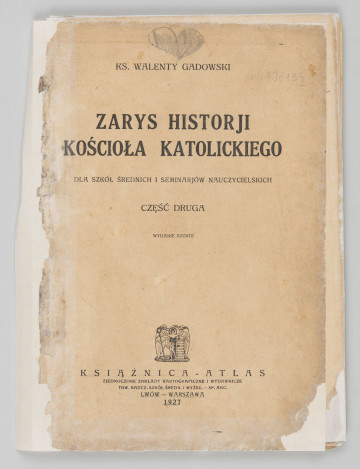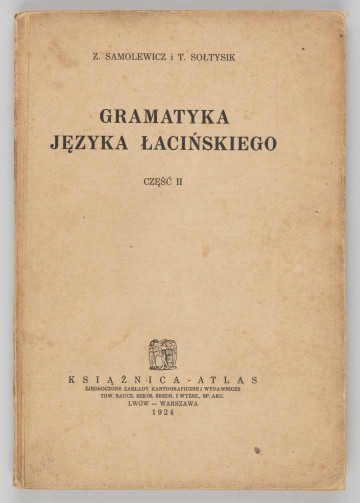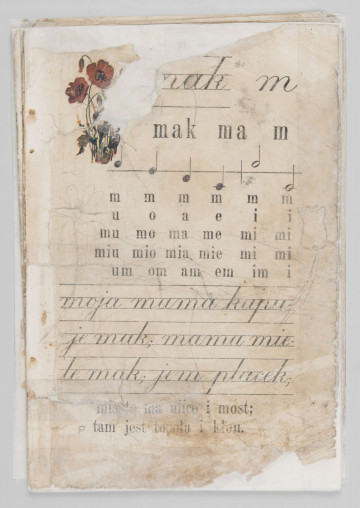
Outline of the history of the Catholic Church for secondary schools and teachers’ schools
1927
National Museum in Lublin
Part of the collection: Education and scouting in Lublin
Two hours per week of instruction in religion in the state schools of the Second Polish Republic was compulsory. Legal issues were regulated by the March Constitution and the 1925 Concordat. Under this treaty, bishops appointed and supervised teachers of religion in schools. The School Commission of the Polish Episcopate specified the outline of curricula as well as determined the content of textbooks for teaching the subject.
The textbook by Baranowski and Noryśkiewicz focusses on issues related to Church dogma. The book began with an introduction entitled O czci Boga w życiu chrześcijanina (The Worship of God in the Life of a Christian). Later on, students learned the secrets of the holy mass (spiritual – for example, the meaning of Christ’s sacrifice, but also the practical aspects – church furnishings or implements used during the mass) as well as discussed the sacraments and the main events of the church calendar. It should be noted that in the Second Polish Republic the textbook could play an auxiliary role; teachers often shared their own materials and encouraged students to read on their own.
The book costed PLN 1.50. The price included the ‘stamp for the construction of public elementary schools’.
One of the authors of the textbook, priest canon Jan Kanty Noryśkiewicz, was born in 1876 into a family of teachers. He became involved in patriotic activities. In 1897 he was awarded his high school diploma and four years later completed his theological studies, then left to study in Münster where he received a doctorate in theology. Until 1920, he taught in junior high schools, and then took administrative positions in educational institutions. He was active in many social organisations, such as the Polish Red Cross and the Maritime League. He was in hiding during the war, but in November 1944 he was arrested by the Gestapo. He was placed in the labour camp in Żabikowo (prisoner number 21 153). In the camp, he served as a priest among political prisoners. He was released just before the camp was shut down owing to the intercession of his niece, Kunegunda Noryśkiewicz, who paid for her intervention with her life. After the war, priest Noryśkiewicz settled in Poznań, where he took over a parish and was involved in the reconstruction of the churches. He died in 1961.
Author / creator
Dimensions
cały obiekt: height: 27,3 cm, width: 21,5 cm
Object type
book
Technique
gluing
Material
paper, adhesive
Creation time / dating
Creation / finding place
Owner
The National Museum in Lublin
Identification number
Location / status

Gadowski, Walenty
1927
National Museum in Lublin

Samolewicz, Zygmunt
1924
National Museum in Lublin

unknown
1918 — 1939
National Museum in Lublin
DISCOVER this TOPIC
National Museum in Lublin
DISCOVER this PATH
Educational path